Poached Orphan Gorilla Finds Sanctuary at the Senkwekwe Center
By Gorilla Doctors Staff on Monday, March 17th, 2014 in Blog.by Dr. Jan Ramer
“Last week, several boys brought a young gorilla who had been caught in a snare to a village near Kahuzi-Biega National Park (PNKB) in the Democratic Republic of Congo. Nobody knows who set the snare, which group she came from, or the plight of the mother, but the village Chief knew that this gorilla did not belong there. He turned the poor frightened infant over to ICCN authorities who immediately made arrangements for PNKB veterinarian Dr. Kizito Kakule to move the gorilla to Lwiro, a primate sancturary in Bukavu, DRC. Dr. Carmen Vidal (Lwiro’s veterinarian) and Dr. Kizito stabilized the little gorilla while plans were made to move her to the Senkwekwe Center in Rumangabo where four other orphaned gorillas live in a forested enclosure. She will remain at Senkwekwe for at least a thirty-day quarantine period while she is further stabilized and assessed for disease.
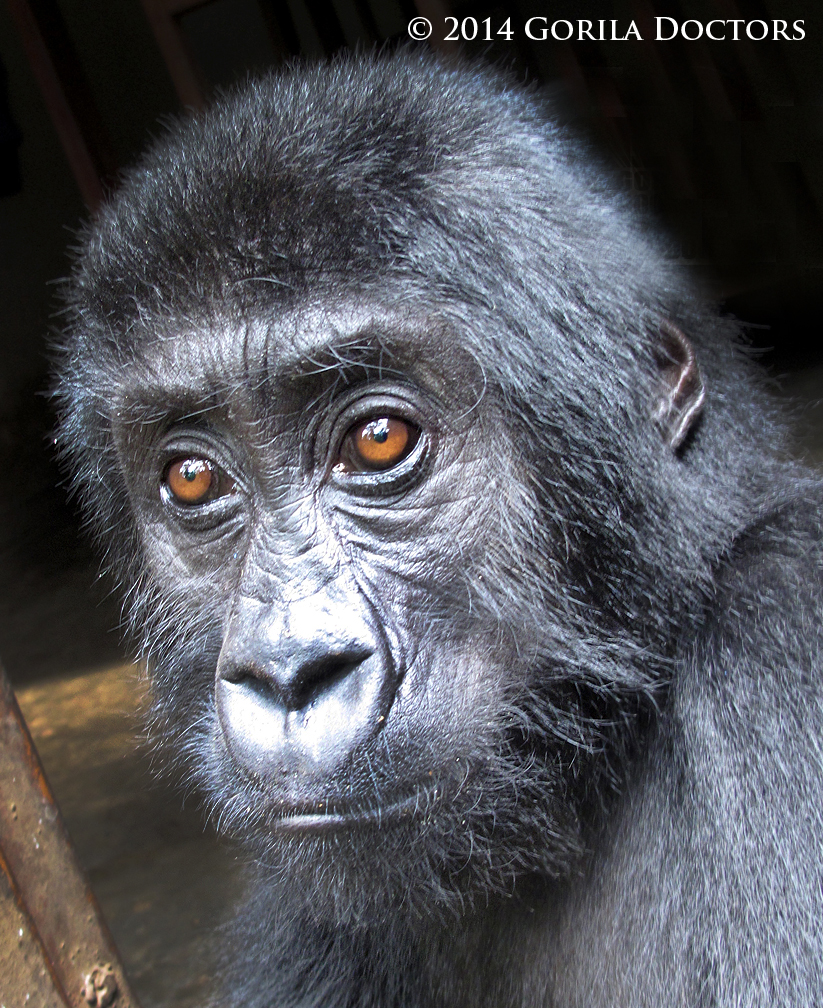 Infant Grauer’s gorilla Kalonge was rescued in DRC in March 2014.
Infant Grauer’s gorilla Kalonge was rescued in DRC in March 2014.
The best way to get from Bukavu to Goma is on a boat that runs the full length of Lake Kivu, so Dr. Kizito and infant Kalonge (named for the town near where she was rescued) took the 3-hour passenger ferry on Thursday, arriving in Goma in the rain, with full ICCN protection and the buzz of UN helicopters overhead. Dr. Eddy and I were waiting at the port to receive the infant and poor little Kalonge already looked a little green around the gills, and we had another 2 hours to get to Rumangabo in the truck.
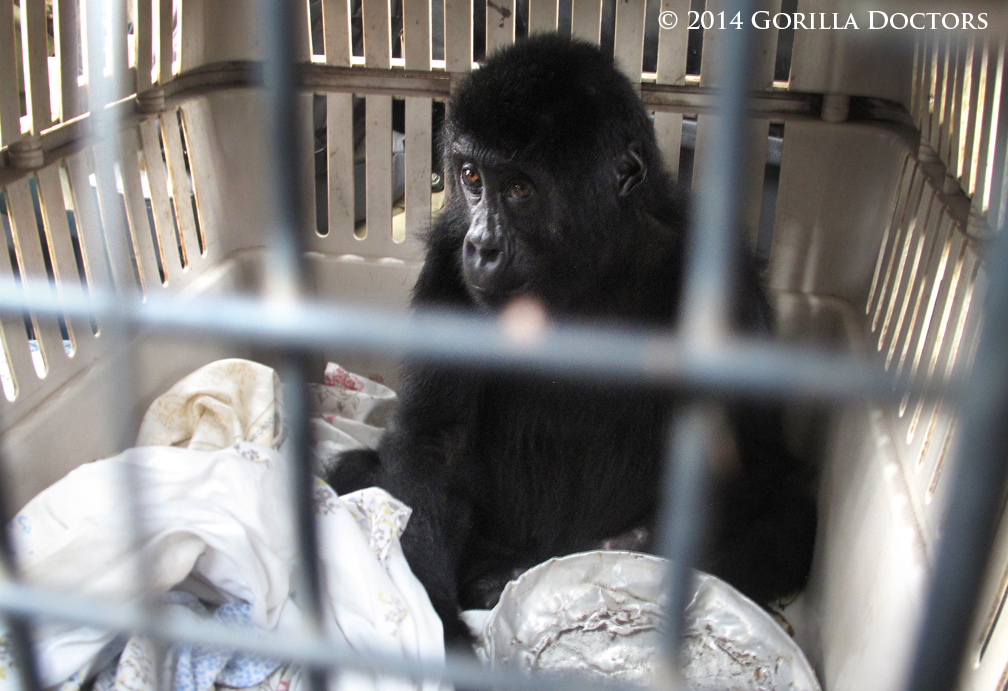 Transporting Kalonge to the Senkwekwe Center in Rumangabo, DRC.
Transporting Kalonge to the Senkwekwe Center in Rumangabo, DRC.
When we finally arrived at the Senkwekwe Center, Kalonge slowly came out of the transport crate into the caring arms of her new caregivers Babo and Phillipe. These two men are very experienced in the care of orphan gorillas, most recently caring for Matabishi, the infant male mountain gorilla who now lives with the adult female orphans Maisha, Ndeze and Ndakasi. Babo and Phillipe know how to make gorilla comforting noises, gently hold her when she is frightened, and encourage her to eat – not a small task. They will spend 24/7 with Kalonge, even sleeping with her, to slowly regain her trust. It is clear that Kalonge is still frightened and a little withdrawn after all of her ordeals, but a little love can go a long way.
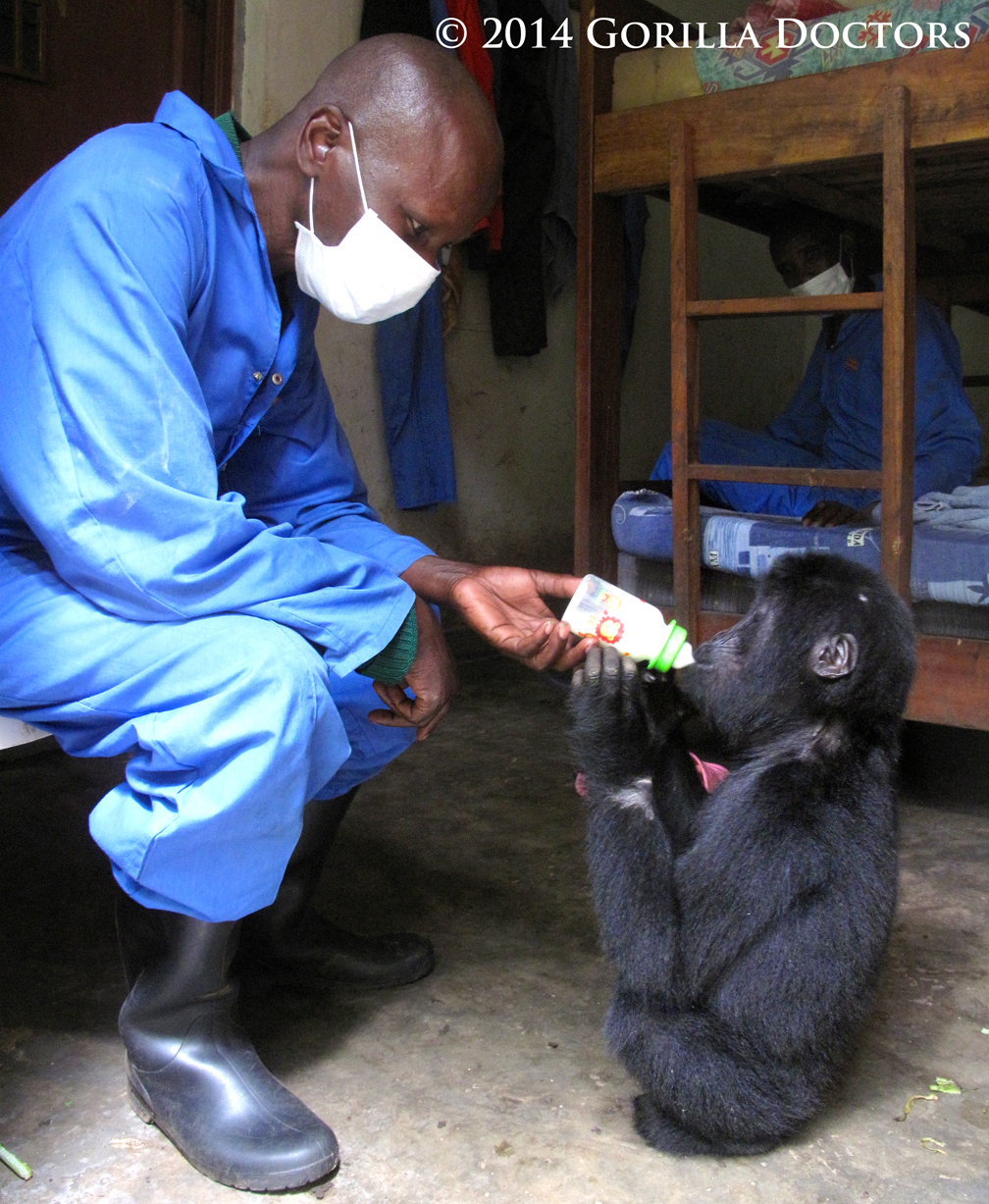 Kalonge’s caretaker feeding her a bottle of milk after her arrival at Senkwekwe.I gave her a quick veterinary exam, nothing stressful, just easy monitoring while she rested in my lap (some days at the office are better than others!). She is thin but strong, eyes are clear, breathing normal, stomach full. She moves well and her snare wounds have healed.
Kalonge’s caretaker feeding her a bottle of milk after her arrival at Senkwekwe.I gave her a quick veterinary exam, nothing stressful, just easy monitoring while she rested in my lap (some days at the office are better than others!). She is thin but strong, eyes are clear, breathing normal, stomach full. She moves well and her snare wounds have healed.
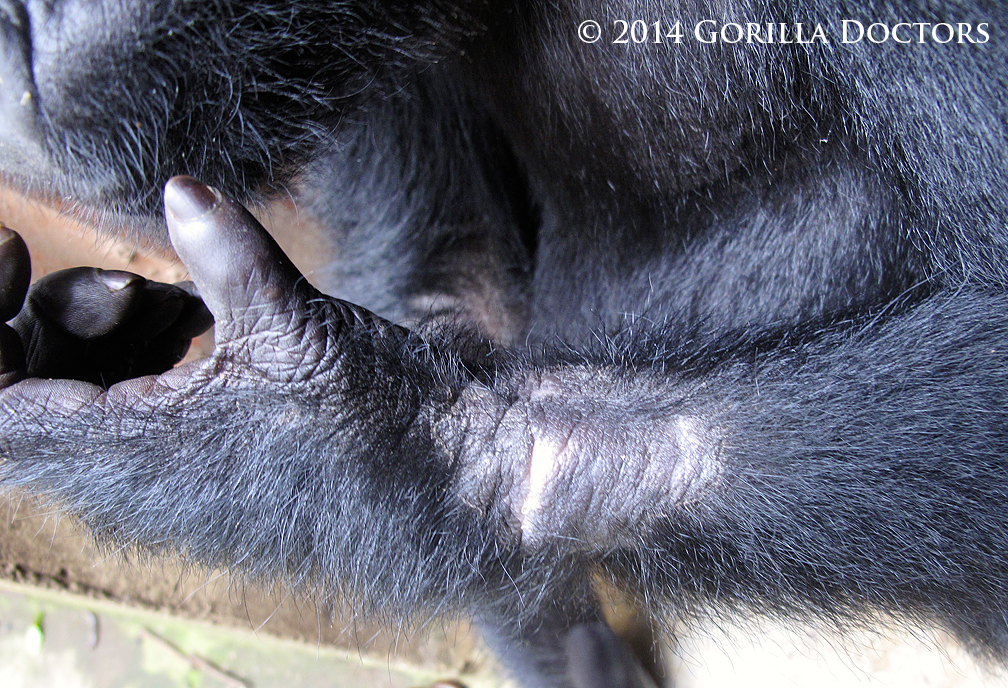 Kalonge’s snare wounds have fully healed.
Kalonge’s snare wounds have fully healed.
She has 2 premolars – I saw them when she was yawning! We think she must be between 2 and 3 years old. She was picking her nose a lot, but what 2 year old doesn’t? We will watch her closely for signs of disease. A fecal exam will be conducted and she will be treated appropriately. After she has settled in she will be anesthetized for her full quarantine examination including TB test and samples for genetic testing. Once she is found to be healthy, and her species confirmed via DNA, she will be moved to be with other gorillas of her own kind. She is most likely a Grauer’s gorilla based on this history (and her long face), so her new home will most likely be the Gorilla Rehabilitation and Conservation Education Center in eastern DRC.
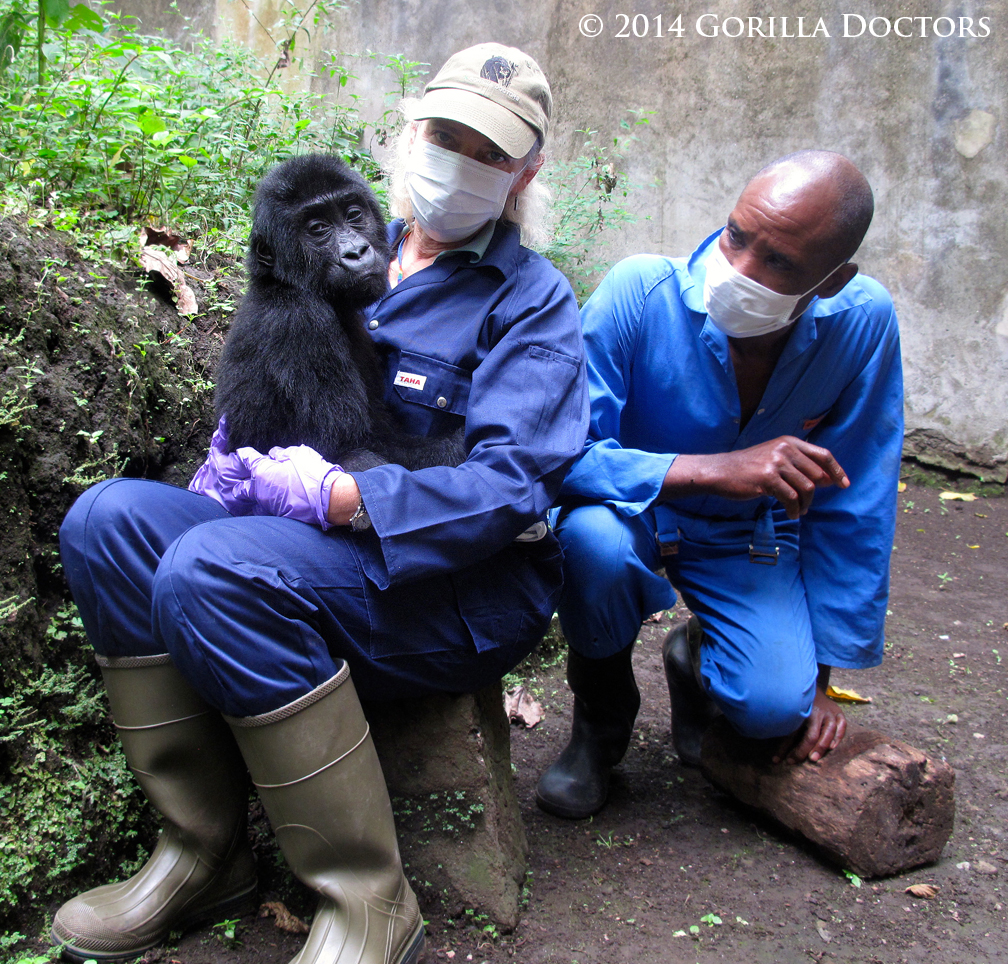 Dr. Jan with new orphan Kalonge and her ICCN caretaker at the Senkwekwe Center.
Dr. Jan with new orphan Kalonge and her ICCN caretaker at the Senkwekwe Center.
Friday afternoon she was introduced to forest food – wild celery, some vines – at first she just looked at it and then looked away. But after an hour or two of humans pretending to eat it, along with a full 24 hours of consistent love and affection, she started feeling more comfortable, and started eating celery. Once she realized how good it was (and obviously familiar), she really got into it! Of course she still loves her milk and bananas, but a large percentage of forest food is a very important component of her diet. She even started venturing around the yard a bit on her own, always coming back to a caregiver for comfort, but obviously gaining confidence. She is a strong little girl.
Little Kalonge would be better off with her family, but for a gorilla caught in a snare she is one of the lucky ones, rescued by a wise chief and ICCN, with her own personal doctors and caregivers. She’ll be back with her own kind as soon as possible.”
Gorilla Doctors has treated over 25 Grauer’s gorilla infants orphaned by poachers in DRC and provide ongoing medical care to the four mountain gorilla orphans who live at the Senkwekwe Center. Stay tuned for more details about Kalonge’s first full exam and her recovery at Senkwekwe.
Please consider supporting us by making a secure online donation. Every dollar you give goes to directly supporting our gorilla health programs and One Health initiative. Thank you for your generosity!


 Donate
Donate